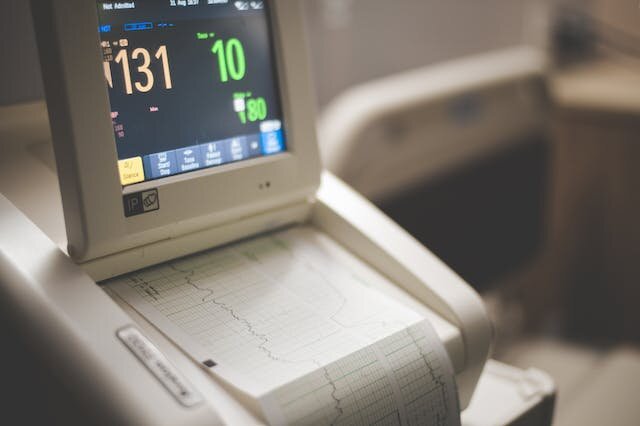Global healthcare advancement and support are considerably aided by the medical device industry. From life-saving equipment to diagnostic instruments, these technological wonders have a profound impact on people’s well-being. This article explores the various ways that the medical device business contributes to the overall healthcare system.
1. Innovations in Diagnosis and Treatment
The continued development of diagnostic tools is one of the most important contributions that the medical device sector has made. Utilizing cutting-edge imaging technologies like magnetic resonance imaging (MRI) and computed tomography (CT) scanners, medical personnel can examine inside structures with an unprecedented level of detail. These techniques contribute to the early detection of diseases, which in turn reduces the need for action at the appropriate time and improves patient outcomes. As a further point of interest, diagnostic tools have progressed to the point that they can now deliver data in real time, which enables more precise and individualized treatment strategies.
2. Enhancing Surgical Precision
Surgical treatments have become more precise and less intrusive because of the introduction of medical gadgets, which have revolutionized medicine. For instance, robotic surgical systems enable doctors to carry out complex surgeries with an accuracy that is unmatched by any other method. This reduces the amount of trauma that patients experience as well as the length of time it takes for them to heal. Surgical instrument manufacturers’ commitment to pushing the limits of what is currently possible in the medical profession is demonstrated by their integration of state-of-the-art technologies.
3. Remote Patient Monitoring
The development of remote patient monitoring devices is an example of how advancements in medical technology have expanded beyond the confines of conventional hospital settings. When it comes to monitoring vital signs and other health data, wearable devices that are integrated with sensors allow for continuous monitoring. This allows patients to actively participate in their healthcare, as well as allowing nurses and other medical personnel to remotely monitor their patients. The continuous flow of information made possible by these devices aids in the creation of healthcare programs that are more proactive and preventative.
4. Improving Quality of Life with Prosthetics and Assistive Devices
The medical device sector has considerably improved the quality of life for people with impairments by developing prosthetics and assistive gadgets. Modern technology has produced increasingly complex prosthetic limbs that emulate natural movement, giving amputees a sense of normalcy. Furthermore, mobility and hearing aids, among other assistive equipment, enable people with impairments to live more independent and satisfying lives.
5. ERP Software Integration
The integration of medical device ERP software from a top-rated company has simplified business processes in the medical device industry, ensuring efficient production, distribution, and regulatory compliance. This program is essential for maintaining strict quality standards, managing intricate supply chains, and optimizing production schedules. ERP software improves operational efficiency by combining many industry aspects in a fluid manner, which raises the general dependability and safety of medical equipment.
6. Ensuring Regulatory Compliance and Patient Safety
Ensuring the safety and efficacy of products in the medical device sector requires strict adherence to regulatory criteria. The industry makes large R&D investments to comply with and surpass these restrictions. Strict testing procedures and observance of quality standards are fundamental to the production of medical devices. In addition to ensuring patient safety, this dedication to regulatory compliance increases confidence in the dependability of medical devices.
Beyond functional safety, modern regulatory frameworks also emphasize the importance of cybersecurity in medical devices. With increasing connectivity through IoT, wireless networks, and cloud-based systems, manufacturers must safeguard against potential cyber threats. Incorporating practices such as penetration testing for medical devices helps ensure compliance with evolving security standards while protecting patient data and maintaining device reliability. By proactively identifying vulnerabilities, organizations can prevent security breaches before they occur, strengthening both patient trust and long-term regulatory readiness. This integrated approach to safety, quality, and cybersecurity reinforces the overall integrity of medical devices in today’s healthcare landscape.
7. Facilitating Global Healthcare Access
The medical device sector greatly aids global access to healthcare. The sector tackles the problems encountered by underprivileged and isolated communities by creating technologies that are both affordable and portable. For example, portable diagnostic gadgets make healthcare more accessible to people living in places with poor access to hospitals. Innovative medical devices have democratized healthcare, which is evidence of the industry’s dedication to having a positive global impact.
8. Regulatory Framework for Medical Devices
To ensure the safety and efficacy of medical devices, regulatory frameworks are in place to govern their development, manufacturing, and distribution. These regulations aim to protect patients and healthcare providers from potential risks associated with the use of medical devices. The regulatory landscape for medical devices varies across different countries and regions. In the United States, the Food and Drug Administration (FDA) is responsible for regulating medical devices. FDA classifies medical devices into three different categories based on their risk levels: Class I (low risk), Class II (moderate risk), and Class III (high risk). Each class is subject to different regulatory requirements, with Class III devices requiring the highest level of scrutiny and clinical evidence.
In the European Union, medical devices are regulated under the Medical Devices Regulation (MDR). The MDR establishes a comprehensive framework for the certification and surveillance of medical devices within the European market. It introduces stricter requirements for clinical evidence, post-market surveillance, and transparency in the supply chain. Additionally, international standards organizations, such as the International Organization for Standardization (ISO), play a crucial role in establishing guidelines for the design, development, and quality management of medical devices. ISO 13485, for example, provides a framework for the implementation of a quality management system specific to the medical device industry.
9. Future Trends in the Medical Device Industry
As the medical device industry continues to evolve, several trends are shaping its future. By staying ahead of these trends, medical device manufacturers can position themselves at the forefront of innovation and drive the transformation of healthcare. Through collaboration between medical device companies and healthcare providers, companies can gain valuable insights into the needs and challenges of healthcare providers, leading to the development of more effective and user-friendly devices. Healthcare providers, on the other hand, can benefit from early access to innovative technologies and contribute to their design and evaluation.
Conclusion
The medical device sector is a vital component of contemporary healthcare, constantly pushing the envelope to improve patient outcomes, diagnosis, and treatment. The sector has a broad impact, ranging from cutting-edge advancements in diagnostics to the incorporation of cutting-edge technologies in surgical procedures. An additional demonstration of the dedication to operational efficiency and regulatory compliance is the incorporation of ERP software. As the sector develops further, it will always be essential to healthcare to promote a time when all people can access and benefit from medical procedures.
You may also like,











